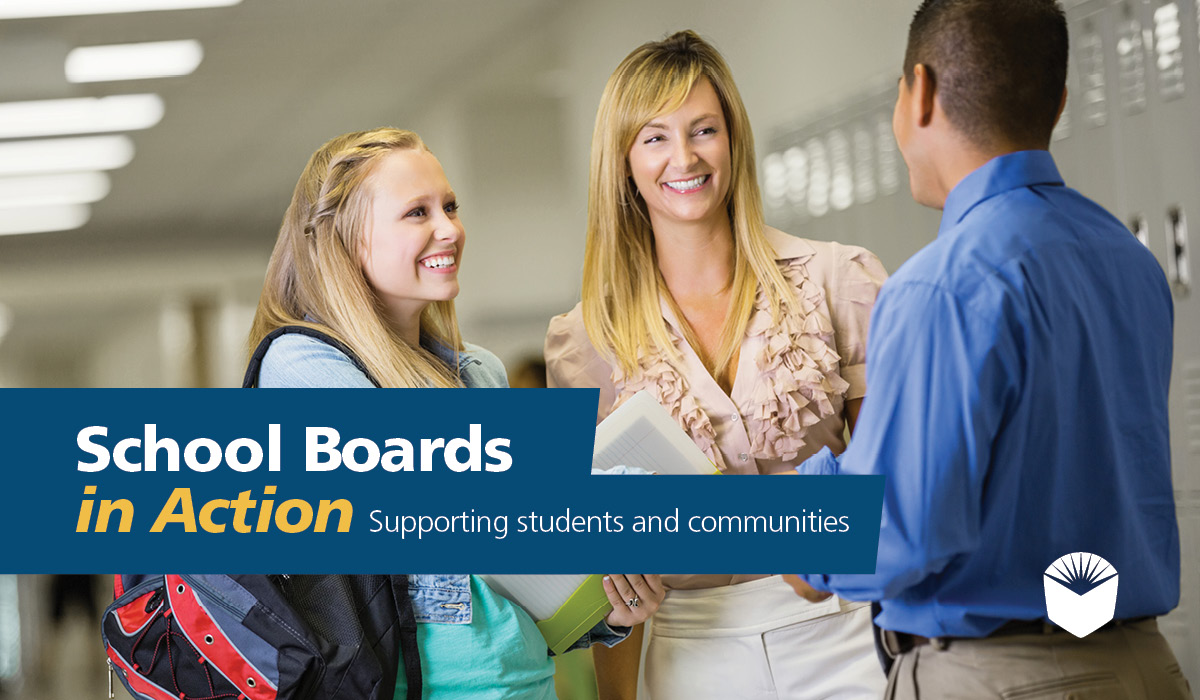Three Southern California school districts of varying sizes shared their summer plans during CSBA’s “School’s in for Summer: Strategies for Successful Summer Programs and Beyond” webinar on April 27.
The first in a two-part series hosted by CSBA addressing strategies, investments and best practices that can guide schools as they prepare for summer school and expanded learning initiatives, the initial event also covered how districts can best leverage state and federal funding to support students and what makes a good summer program.
West Covina Unified School District Board President Eileen Miranda Jimenez is ready to further expand summer programming this year, a task the district has been successfully working at over the last decade.
“During the summer we have dual immersion, bilingual education going on and a dance camp but because of the infusion of money we are super excited as a district and how we’re going to focus our resources this summer — the biggest component is social-emotional,” Miranda Jimenez said. “We are really looking forward to supporting our kiddos who have been home for over a year.”
The district anticipates serving between 2,500 and 3,000 of its roughly 8,500 students.
Currently, about half of West Covina’s elementary children are still in distance learning so Miranda Jimenez sees summer as a way to draw them to campus. “We’re going to focus on social-emotional, literacy and math, physical fitness — we’re making sure everything is STEAM and most importantly, in order to engage students who desperately are looking for that support, we want to make it fun,” she said.
Elementary-level offerings will be in-person and a transitional kindergarten and kindergarten literacy bootcamp is being added. For middle and high school, credit recovery and first credit opportunities will be available as well as peer leadership, performing arts and other courses.
Miranda Jimenez said they are using teachers, support staff and parents to facilitate programs and are looking to have fun in addition to learning. “We’re pulling from a lot of different resources but the biggest thing that we’re doing this year that has me super excited is that we have put out a call to our teachers and are asking if they have a hobby, a skill, a passion and would you like to get paid a week or two and teach it,” she noted.
The district is also expanded its special education and foster, homeless youth and mental health programs. Funding will also go toward training for staff. “We have had little to no training in the past for our paraprofessionals, so this is really good and we’re appreciative of the money,” Miranda Jimenez said.
In San Diego USD — the second largest district in California — programming is being constructed “in partnership with our entire community-based sector,” said Board President Richard Barrera.
On weekday mornings, students will go to school for academic instruction with a focus on project-based learning (online options will also be available, particularly for credit recovery). In the afternoon, they will have the chance to take part in community-based programs.
San Diego USD invested $5 million into its local community foundation, The San Diego Foundation, which will make microgrants available to nonprofits to lead programs. “We’re expecting to see a lot of creative options ranging from swim camps and surf camps to music and art and science camps. They will be very neighborhood-based programs in some situations and programs that are available throughout the city,” Barrera said. “We will make our district transportation available to take our students from school in the morning to the after-school programs that parents will select.”
Barrera said they are recruiting teachers now. “We are going to the bargaining table with our different bargaining units to talk about incentives on top of the summer school pay already built into the contract,” he said. The district is also reaching out to retired educators, students in schools of education and other potential instructors.
Meanwhile, with about 3,200 students, Newman-Crows Landing USD has similar plans to West Covina and San Diego, but programs are organized into camps, said Trustee Paul Wallace. “We’ve always offered a little bit of summer school, but we’re expanding the sites and students,” he said. “Summer learning in Newman-Crows Landing always means something different but we’re covering standards and doing it in a fun way.”
Overall, they are focused on math and reading standards, Wallace said. Elementary offerings will also incorporate science, and middle and high school students will have academic opportunities and camps that incorporate the passions of staff, like a Wizarding World of Harry Potter course that includes slime-making and a drone race.
“One thing that we did add is academic counseling,” Wallace said. “Our counselors and students haven’t had a chance to meet and talk about college and master schedule, so we’ll be doing that as well.”
To encourage more instructors to participate, Wallace said the district is paying teachers and classified staff a “more generous” per-diem rate and hiring more staff. The second webinar, “Expanding Learning: Governance for Developing Effective Learning Recovery Plans,” will take place May 4 from 11 a.m. to 12:30 p.m. Register now and find additional resources and information at csba.org/summerlearning.





